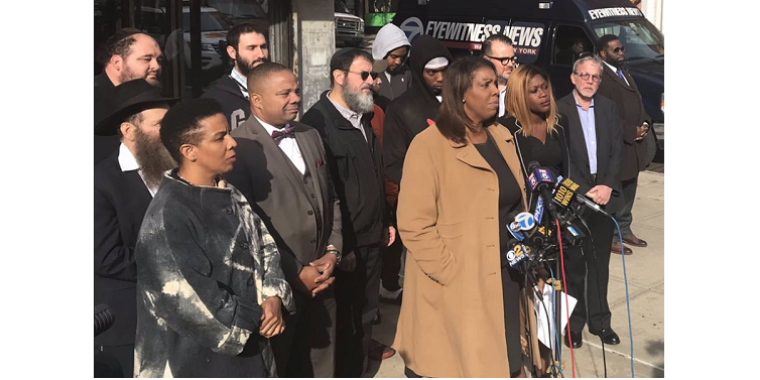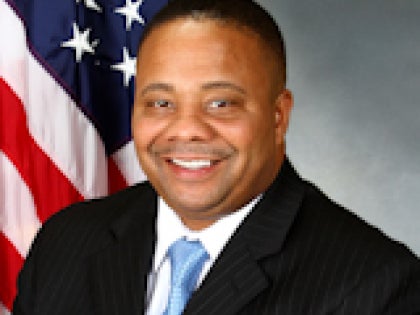
United in Call to Investigate Slave & Veterans Burial Ground in Brooklyn
Ean Fullerton
August 17, 2017
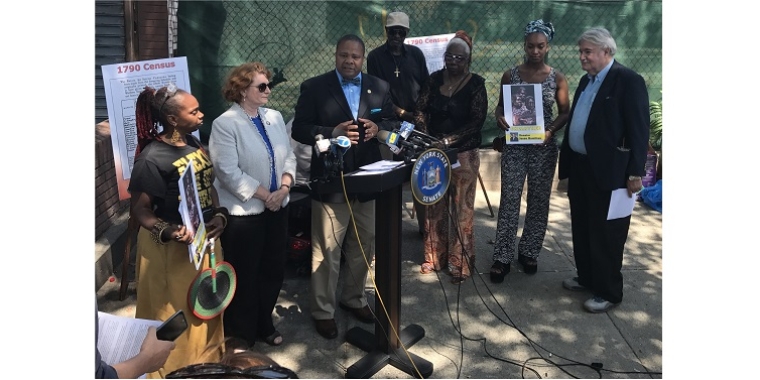
Brooklyn, NY – Lawmakers, historic preservationists, academics, and community advocates will united today to call on the New York State Office of Parks, Recreation and Historic Preservation to conduct a full investigation of the Brooklyn lot that may hold the 19th century remains of enslaved Africans. The site, at the location of the press conference, is endangered by the potential construction of a school without appropriate, independent architectural historian and archaeological investigation. The diary of Adriance Van Brunt serves as evidence that the site may be a burial ground; Van Brunt was a member of a prominent, 19th century Brooklyn slaveholding family.
Prior to the recent revelations about the site being a potential slave burial ground, Senator Hamilton and Assembly Member Simon introduced legislation in 2015 to preserve the site and recognize its historical significance due to links to the U.S. War of Independence (current bill number: Senate Bill 2446; Assembly Bill 1263).
Senator Jesse Hamilton said, “I support building more schools to alleviate school overcrowding. But we cannot have a school built on a foundation of ignorance. We cannot ask our children to understand history if we do not. I call on the New York State Office of Parks, Recreation, and Historic Preservation to honor the slaves and the veterans of this site. Honor their memory. Honor their contributions to our history.”
Assembly Member Jo Anne Simon said, “The area at 170 8th Street has long been believed to be a possible burial ground for the Maryland Heroes who fought in the historic Battle of Brooklyn. Recent evidence suggests that in addition to these men, it is likely that enslaved persons were also buried at this site. In a rapidly developing area of Brooklyn, it is important to preserve the history of the borough even as we welcome change. Before moving forward with the construction of a new school, I strongly encourage that a full investigation and analysis of the site be conducted to examine whether it is the location of slave burials, as indicated in the diary of Adriance Van Brunt, or the Marylanders.”
“Our nation’s history is intricately linked with the abhorrent practice of slavery,” said Brooklyn Borough President Eric L. Adams. “At a time when the country is so bitterly divided on the appropriate approach to righting this historical wrong, it is imperative that New York stands for preserving history and protecting truth. I support State Senator Hamilton’s call for an independent investigation into the possible slave burial site located at the former Van Brunt home in Gowanus. The only way that we can grow and move forward in unity as One Brooklyn is if we confront the painful truths of the past. An independent archaeological and architectural investigation will ensure that the voices of those who may have lived in bondage on that site will not remain silent forever.”
Bertha Lewis, Founder and President of the Black Institute, said, “In the south, they honor slavery with statues to the Confederacy. In New York City, we are more sophisticated: We simply destroy our city's role. New York was the financial capital of the slave trade, and Brooklyn's population was once 30% enslaved. We have to stop pretending & come to grips with the fact that this city was part of a violent, racist slave system. We have a choice. Are we going to gloss over this history by building a school on top of the bodies of enslaved African Americans? Or are going to give this the thorough investigation it deserves. It is a sacred duty to uncover this history. We must dig deep into this history and into this ground.”
Don Papson, Co-Founder, North Country Underground Railroad Historical Association and North Star Underground Railroad Museum and co-author of Secret Lives of the Underground Railroad in New York City: Sydney Howard Gay, Louis Napoleon and the Record of Fugitives, said, “I urge the New York State Office of Parks, Recreation and Historic Preservation to conduct a full archaeological study of the site in Brooklyn where the remains of enclaved Africans may be buried. Slavery holds us in its shackles. We can not move forward as a free people until we come to grips with our slavery past.”
Shawne' Lee, Director, Friends of 227 Abolitionist Place Museum Heritage Center, said, “Friends of 227 Abolitionist Place call for a full investigation of the possible slave burial site in Gowanus. We remain highly critical of AKRF, since their report of the Abolitionist history of Downtown Brooklyn contains some glaring problems. AKRF hired Peer Reviewers to provide legitimacy for their study. Yet despite enthusiastic and overwhelming support the for preservation of the Abolitionist and possible Underground Railroad history of Duffield and surrounding streets, AKRF's came to the conclusion that there was not sufficient reason to support preservation. As a reward for their efforts in disregarding their own experts, the City paid them $500,000 for a non-competitive contract. Downtown Brooklyn is not far from Gowanus, and the historical question remains the same. Despite—or possibly BECAUSE of AKRF’s record—they have been chosen again. We do not believe this company has the capacity or the motivation to properly research Brooklyn's connection to slavery.”
In the 2015 legislative justification memo to preserve the site, Sen. Hamilton wrote that the site: has long been recognized as part of the area where the 256 Maryland Heroes were buried who died covering the retreat of the Continental Army on August 27, 1776. The Gowanus/Park Slope area, where the site is located, has undergone drastic changes in the last 15 years. Deindustrialization, coupled with a striking increase in property values, have led to the demolition of many older buildings in the neighborhood that were part of the first wave of commercial and tenement construction after 1890, and which were cited in the historical evidence as overlying the Marylanders' graves, making locating any human remains more difficult. Many have already been replaced by luxury housing. The subject property, the only vacant land that is part of the Marylander Burial Site, is for sale and is likely to be redeveloped as luxury housing absent any public action, leading to obscuring the burials forever. There is no onsite recognition of the Maryland Heroes, who have been the subject of memorialization efforts by both the states of New York and Maryland, the federal government, and local citizens, since at least 1900. The sacrifice of the Maryland Heroes saved the American Revolution, and remains a subject of historical research by the state of Maryland. Substantial assistance from Maryland, the federal government and other jurisdictions is anticipated.
WHO:
- NYS Senator Jesse Hamilton
- NYS Assembly Member Jo Anne Simon
- Office of Congresswoman Nydia M. Velázquez
- Office of Brooklyn Borough President Eric L. Adams
- Bob Furman, President of the Brooklyn Preservation Council
- John Lonergan, Post Commander at Michael A. Rawley Jr. New York American Legion Post #1636
- Richard Green, Chief Executive Officer of Crown Heights Youth Collective
- James Driscoll, Vice President of History at the Queens Historical Society
- Prithi Kanakamedala, Ph.D., Assistant Professor of History at Bronx Community College of the City University of New York
- Shawne' Lee, Director, Friends of 227 Abolitionist Place Museum Heritage Center
- Zenzele Cooper, Tour Educator at Weeksville Heritage Center
About Senator Hamilton:
Senator Jesse Hamilton has spent his entire career helping people, including over 15 years as President of the School Board and District Leader. He is a husband, father, and public servant delivering and fighting for one of the most diverse Senate districts in New York State.
Share this Article or Press Release
Newsroom
Go to NewsroomLooking Back and Moving Forward
October 31, 2018
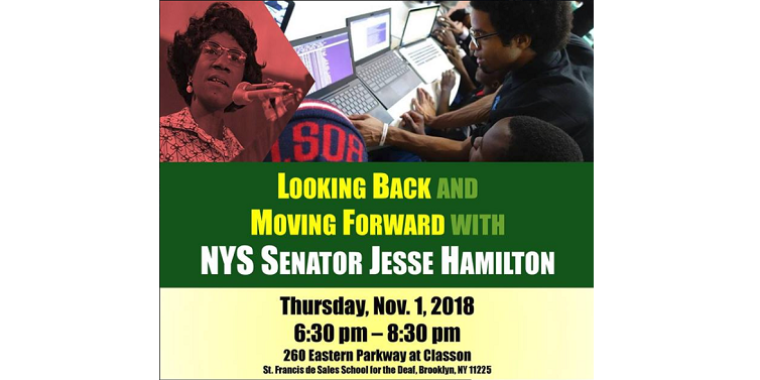
Standing United Against Hate
October 29, 2018
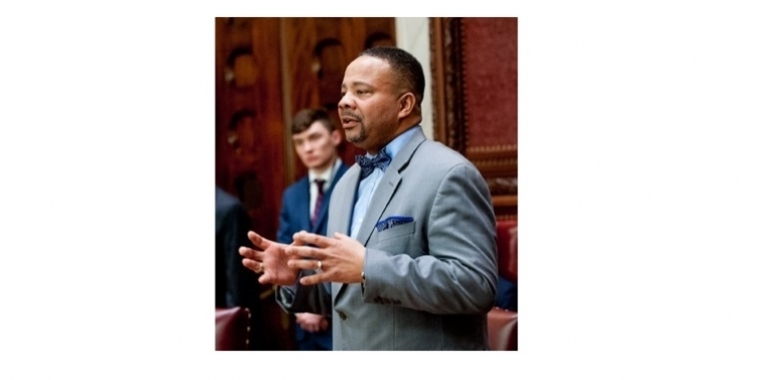
Celebrating Digital Girl & Empowerment Through Tech
October 26, 2018
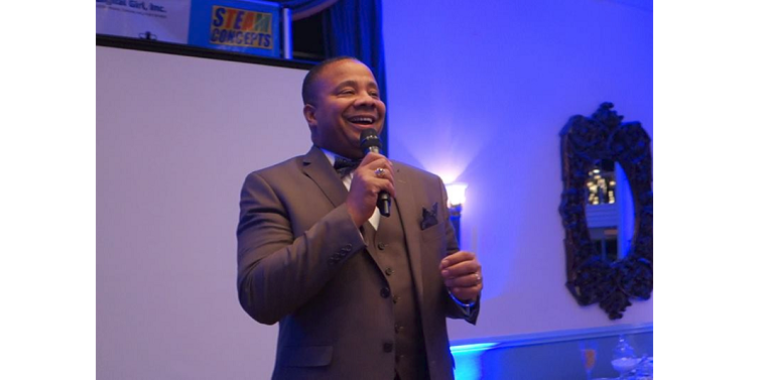
Standing United Against Hate Crimes
October 16, 2018
